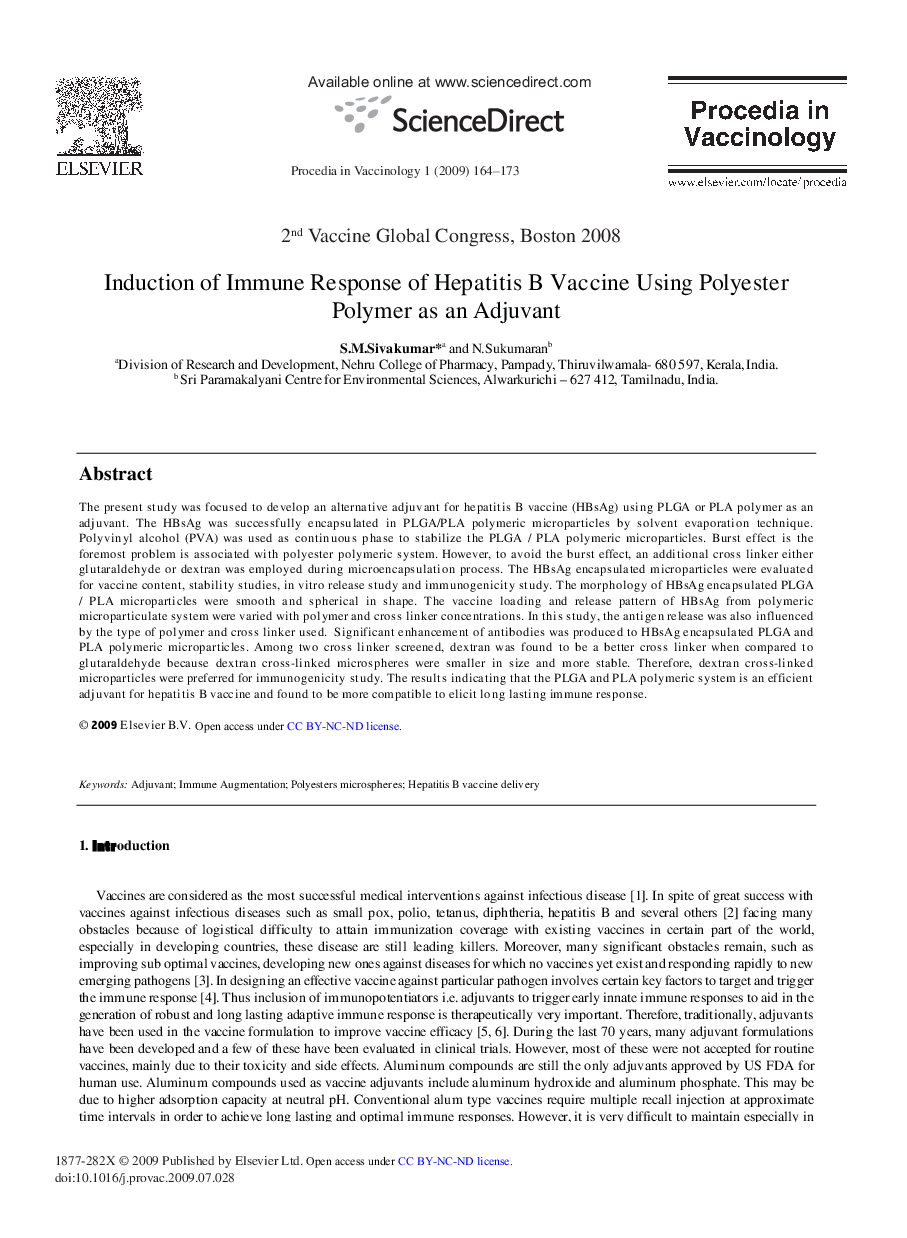| Article ID | Journal | Published Year | Pages | File Type |
|---|---|---|---|---|
| 2473874 | Procedia in Vaccinology | 2009 | 10 Pages |
The present study was focused to develop an alternative adjuvant for hepatitis B vaccine (HBsAg) using PLGA or PLA polymer as an adjuvant. The HBsAg was successfully encapsulated in PLGA/PLA polymeric microparticles by solvent evaporation technique. Polyvinyl alcohol (PVA) was used as continuous phase to stabilize the PLGA / PLA polymeric microparticles. Burst effect is the foremost problem is associated with polyester polymeric system. However, to avoid the burst effect, an additional cross linker either glutaraldehyde or dextran was employed during microencapsulation process. The HBsAg encapsulated microparticles were evaluated for vaccine content, stability studies, in vitro release study and immunogenicity study. The morphology of HBsAg encapsulated PLGA / PLA microparticles were smooth and spherical in shape. The vaccine loading and release pattern of HBsAg from polymeric microparticulate system were varied with polymer and cross linker concentrations. In this study, the antigen release was also influenced by the type of polymer and cross linker used. Significant enhancement of antibodies was produced to HBsAg encapsulated PLGA and PLA polymeric microparticles. Among two cross linker screened, dextran was found to be a better cross linker when compared to glutaraldehyde because dextran cross-linked microspheres were smaller in size and more stable. Therefore, dextran cross-linked microparticles were preferred for immunogenicity study. The results indicating that the PLGA and PLA polymeric system is an efficient adjuvant for hepatitis B vaccine and found to be more compatible to elicit long lasting immune response.
